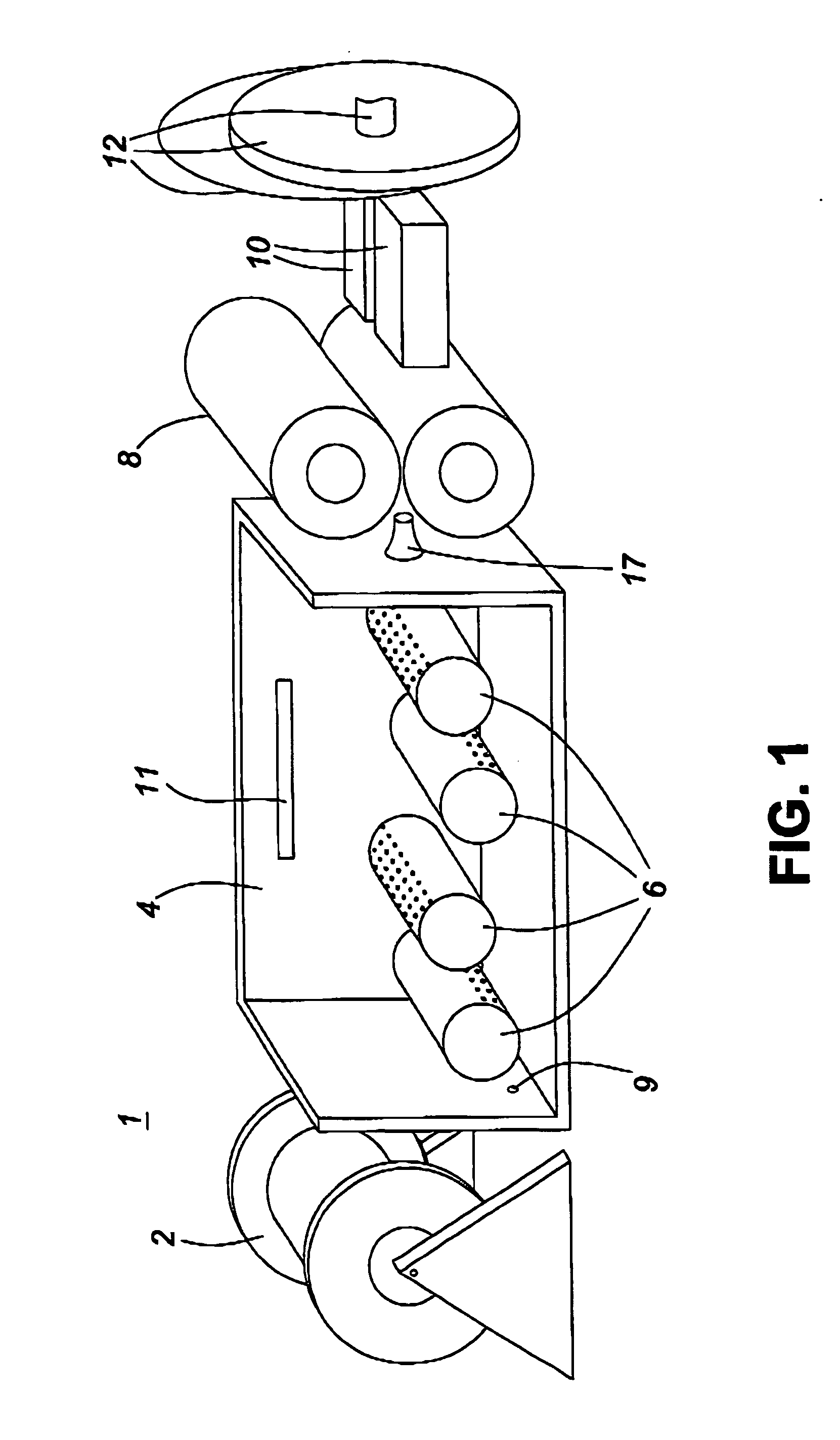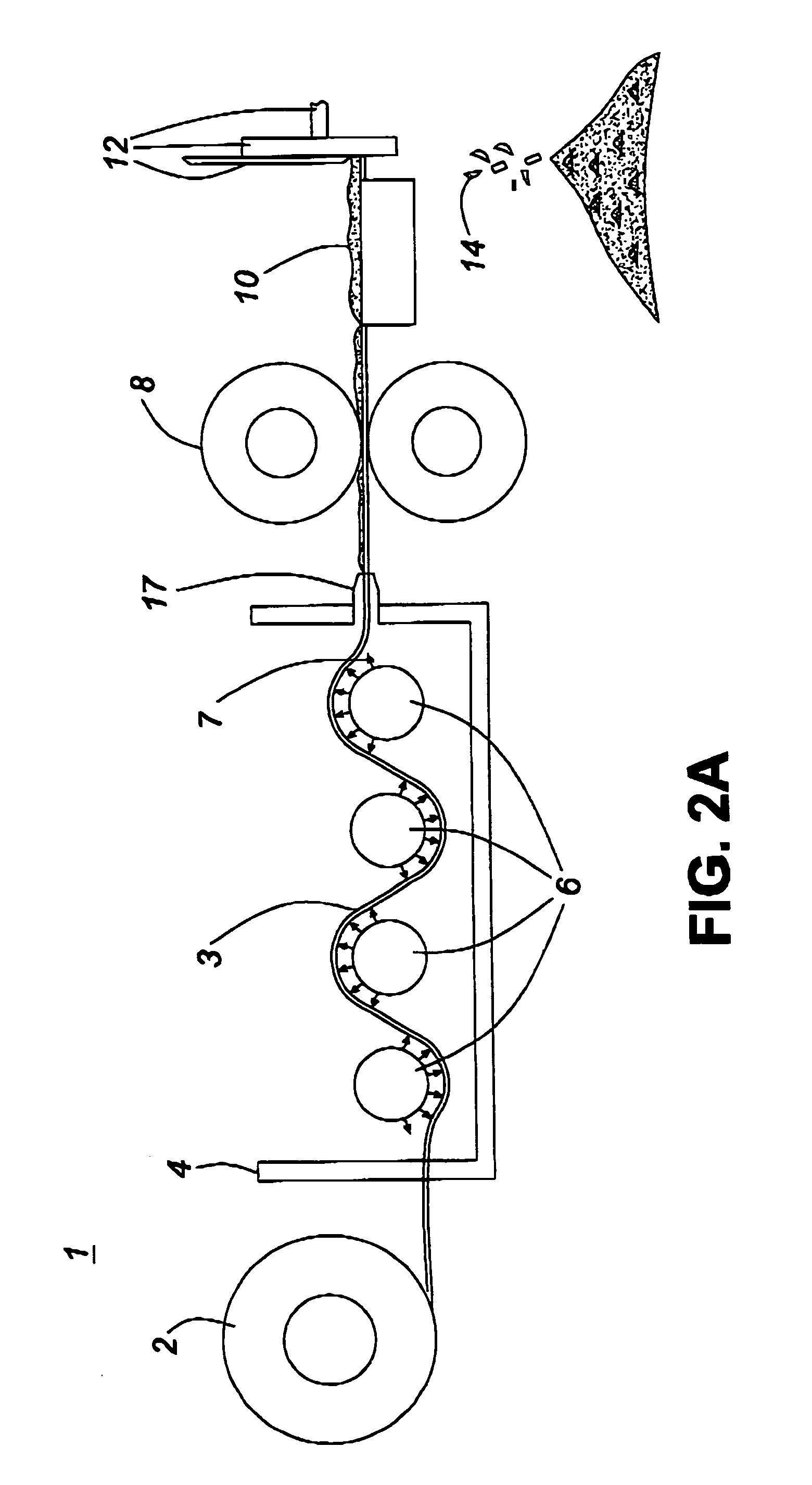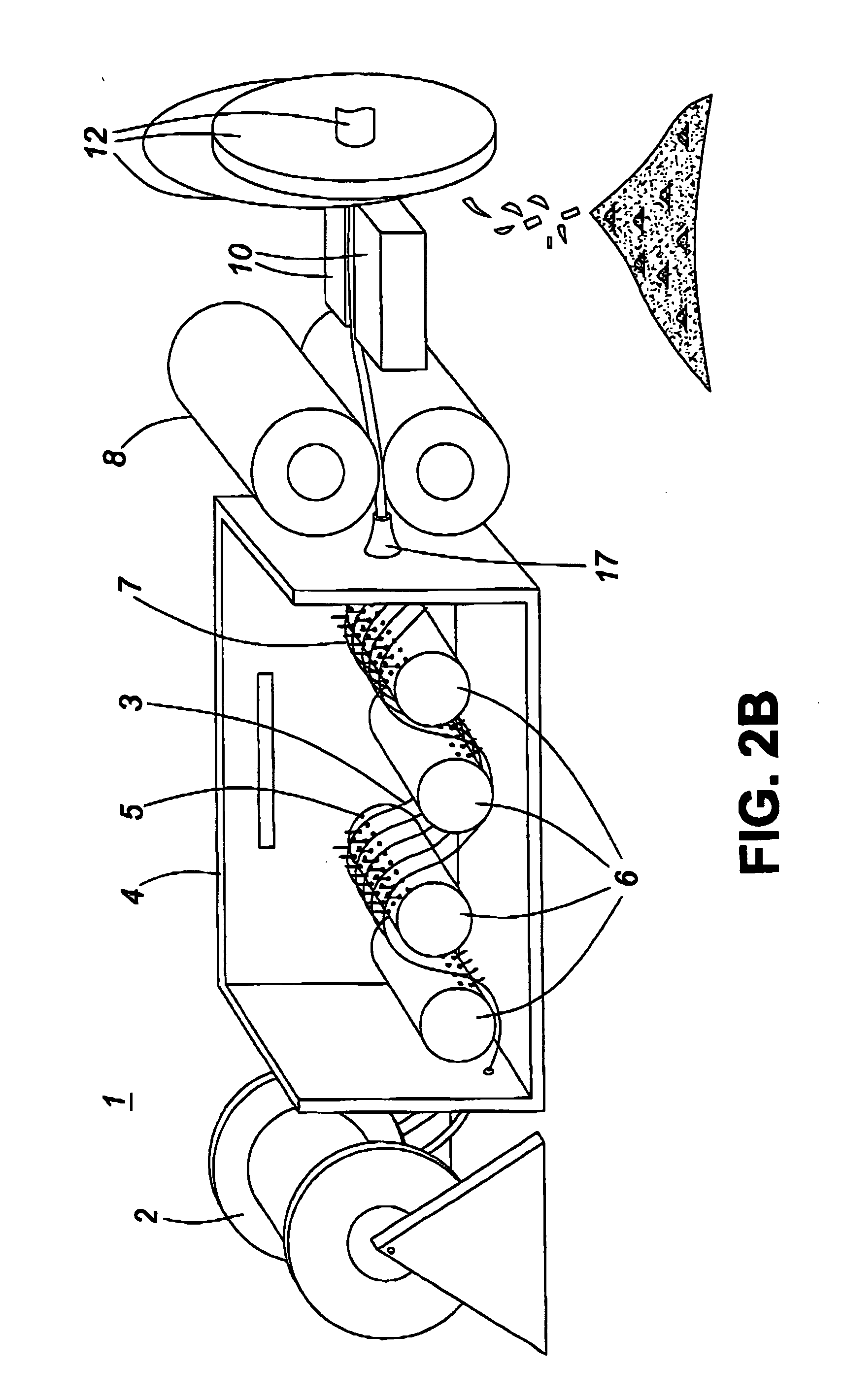Method and apparatus for fabrication of polymer-coated fibers
a technology of polymer coating and fiber, applied in the direction of coating, yarn, fibre chemical features, etc., can solve the problems of air bubbles trapped in the composite, serious compromise of composite properties, expansion of air bubbles retained in the composite during processing, etc., and achieve the effect of low cos
- Summary
- Abstract
- Description
- Claims
- Application Information
AI Technical Summary
Benefits of technology
Problems solved by technology
Method used
Image
Examples
Embodiment Construction
[0028] The present invention provides an apparatus comprising: a bobbin from which a roving of fabric is drawn, at least one set including at least one nozzle housed in a heated chamber, each containing at least one line of holes and from each of which a stream of molten polymer is sprayed, a cooling chamber wherein an inert gas is blown over the coated fibers for cooling and solidifying the molten polymer, a set of fiber pick-up wheels which draws the roving from the bobbin and past the nozzle, through the cooling chamber and through an exit nozzle; a strand alignment device which aligns the strands of polymer coated fiber, and a set of cutting blades of various geometry, preferably cutting wheels which cut the polymer coated fiber into short segments or pellets. Alternatively, the polymer-coated fiber can be simply wound in a length for use later as short (e.g., 1 cm) pellets or in any given length (e.g., 1 m lengths that might be used to fabricate a mat-like composite product).
[...
PUM
| Property | Measurement | Unit |
|---|---|---|
| melting temperature | aaaaa | aaaaa |
| size | aaaaa | aaaaa |
| angle | aaaaa | aaaaa |
Abstract
Description
Claims
Application Information
 Login to View More
Login to View More - R&D
- Intellectual Property
- Life Sciences
- Materials
- Tech Scout
- Unparalleled Data Quality
- Higher Quality Content
- 60% Fewer Hallucinations
Browse by: Latest US Patents, China's latest patents, Technical Efficacy Thesaurus, Application Domain, Technology Topic, Popular Technical Reports.
© 2025 PatSnap. All rights reserved.Legal|Privacy policy|Modern Slavery Act Transparency Statement|Sitemap|About US| Contact US: help@patsnap.com



